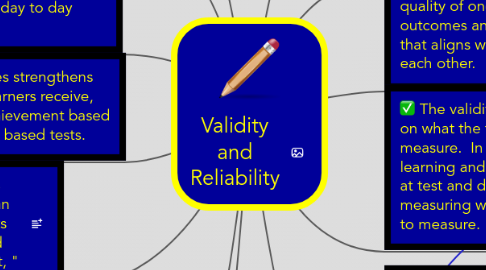Validity and Reliability
af Peter Aulaumea


1. These learning activities strengthens the accuracy of test learners receive, i.e., either they are achievement based or personality and trait based tests.
2. Test reliability depends solely on evidence provided to teachers throughout their day to day activities.
3. "Does the test yield the same or similar score rankings (all other factors being equal) consistently?" (Kubiszyn & Borich, 2010)
4. RELIABILITY
5. The reliability of a test also depends on whether a certain test material can repeatedly obtained the same results over and over again as Kubiszyn and Borich (2010) both agreed upon that, "
6. For example, test-re-test is one of the methods that is determine to be reliable in its own ritual. That is to say, test-re-test reaffirms test results that correlates the first testing and the second testing. The problem with this method would be memory and experience. These two detail affects the way results come about. Students in either testing groups have the tendency of memorizing answers based upon their personal experience while taking the same tests later in the week.
7. Another example of reliability would be internal consistency. This method is probably the most effective than that of test-re-test as well as alternate forms or equivalency. Internal consistency is also known as split-half. That is the same as saying:
7.1. New node
7.1.1. New node
